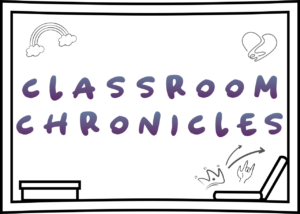Understanding Outbound Appointment Setting
Outbound appointment setting is the process of proactively reaching out to potential clients with the goal of booking meetings or calls with decision-makers. Unlike inbound strategies where prospects show interest first, outbound approaches rely on sales teams initiating contact. This method has been a cornerstone of business development for decades because it allows companies to directly target individuals or organizations that fit their ideal customer profile. Outbound appointment setting is particularly valuable in industries where high-value deals require direct communication and trust-building. By setting up qualified appointments, sales representatives create opportunities for closing more deals and driving revenue. Businesses that rely solely on inbound leads often face limitations, while outbound efforts ensure control over pipeline growth. Ultimately, outbound appointment setting combines persistence, strategy, and skill to consistently fuel sales activity.
The Importance of Outbound Appointment Setting for Business Growth
Every company depends on a steady flow of leads and conversations to keep revenue growing. Outbound appointment setting provides predictability by generating consistent opportunities, regardless of market fluctuations. When done effectively, it ensures sales teams always have prospects to engage with, reducing downtime and boosting productivity. This approach also helps organizations expand their reach beyond passive interest by tapping into potential buyers who may not have discovered them otherwise. It strengthens brand visibility by putting a company directly in front of targeted audiences rather than waiting to be found. For B2B companies, outbound methods are especially powerful because purchasing decisions often require personal contact and tailored discussions. Appointment setting accelerates sales cycles since the focus is placed on high-value interactions rather than low-priority inquiries. Over time, outbound appointment setting positions businesses as proactive and growth-oriented leaders in their industries.
Core Components of an Effective Outbound Appointment Setting Strategy
An effective outbound appointment setting strategy requires careful planning and execution. First, businesses must identify and understand their target audience. Without precision, outreach efforts can waste valuable time and resources on the wrong prospects. Crafting compelling scripts is equally important, as they should capture attention while sounding natural and conversational. Technology such as CRM systems plays a vital role in organizing data, tracking conversations, and ensuring follow-ups happen consistently. Equally important is the training of sales development representatives (SDRs) who often handle the bulk of outreach. Their ability to balance persistence with professionalism can determine the success of the campaign. Collaboration between SDRs and closers ensures that appointments transition smoothly into meaningful sales conversations. Together, these components form a structured process that drives reliable results.
The Role of Technology in Outbound Appointment Setting
Technology has transformed how outbound appointment setting is executed. Automated dialing systems, email sequences, and scheduling tools save time while increasing outreach volume. Advanced CRM platforms track every interaction, ensuring no prospect slips through the cracks. Data-driven insights help identify which scripts, channels, or times of day yield the best response rates. Artificial intelligence and predictive analytics are increasingly used to refine targeting and personalize outreach at scale. These tools allow businesses to prioritize leads most likely to convert into booked appointments. Multi-channel communication tools enable sales teams to engage prospects across phone, email, and social platforms seamlessly. With the right technology stack, outbound appointment setting becomes less about repetitive tasks and more about building meaningful connections with qualified prospects.
Common Challenges in Outbound Appointment Setting and How to Overcome Them
Outbound appointment setting is not without its difficulties. One of the biggest challenges is facing rejection, which is inevitable when contacting cold leads. Gatekeepers, such as receptionists or assistants, also add an extra layer of difficulty in reaching decision-makers. Balancing personalization with high outreach volume can be tough, as sending generic messages rarely produces results. Compliance with regulations like TCPA or GDPR is another hurdle businesses must navigate carefully. Motivation can also waver among sales teams when dealing with repeated objections. To overcome these challenges, companies must adopt resilience, proper training, and strategic planning. By continuously testing new methods and staying compliant with industry standards, outbound appointment setting becomes a reliable growth engine instead of a frustrating task.
Best Practices to Maximize Outbound Appointment Setting Success
Sales teams that excel in outbound appointment setting follow proven best practices. They research prospects thoroughly before making contact, which shows respect for the prospect’s time and increases the chances of engagement. Personalized messaging goes a long way in demonstrating relevance and building trust. Multi-channel outreach ensures prospects are reached where they are most comfortable, whether through phone calls, emails, or LinkedIn messages. Monitoring performance metrics helps identify areas of improvement quickly. Using a consultative approach rather than a pushy sales pitch creates a more positive impression. Teams that prioritize consistency often outperform those that rely on occasional bursts of effort. By applying these practices daily, outbound appointment setting evolves from a numbers game into a strategic process.
Quick checklist of best practices to remember:
- Research each prospect before outreach
- Personalize calls and emails
- Use a multi-channel approach (phone, email, LinkedIn, etc.)
- Track KPIs regularly
- Stay consistent with outreach efforts
- Keep messaging conversational, not overly scripted
- Ensure compliance with communication regulations
Measuring the Effectiveness of Outbound Appointment Setting
Measuring results is key to optimizing outbound appointment setting. Businesses need to define and monitor key performance indicators (KPIs) that align with their goals. Metrics such as call-to-appointment ratios, email response rates, and the number of qualified meetings booked help assess success. Conversion rates from initial outreach to actual sales meetings highlight the quality of the process. Beyond individual metrics, businesses should analyze the return on investment (ROI) of their campaigns. Regular reporting provides insights into what’s working and what needs adjustment. Data should guide decision-making, allowing companies to double down on high-performing strategies while refining weaker areas. By tracking progress consistently, outbound appointment setting becomes more predictable and scalable.
Building a Skilled Outbound Appointment Setting Team
Behind every successful outbound campaign is a skilled team. Recruiting the right individuals is the first step, as they need resilience, adaptability, and strong communication skills. Training is an ongoing requirement since appointment setting evolves with technology and buyer behavior. Incentives and recognition play a big role in keeping teams motivated, especially when facing the daily challenges of cold outreach. Collaboration between SDRs and closers ensures a smooth handoff and a better experience for prospects. Leadership must also emphasize continuous improvement by providing feedback and resources. Investing in professional development and coaching helps sales representatives stay sharp and competitive. Over time, a well-trained team becomes a company’s greatest asset in driving consistent outbound success.
Future Trends in Outbound Appointment Setting
The future of outbound appointment setting will be shaped by both technology and buyer expectations. Artificial intelligence is becoming increasingly central, helping sales teams identify the right prospects faster and with greater accuracy. Automation will continue to streamline scheduling, allowing more time for personalized conversations. However, despite technological advances, the human touch will remain essential. Buyers expect personalization and genuine engagement, not robotic messages. Multi-channel integration will grow stronger, ensuring seamless experiences across email, phone, and social platforms. Data-driven strategies will play an even larger role in determining where and how to invest resources. Businesses that adapt to these trends will stay ahead while those clinging to outdated methods risk falling behind.
Frequently Asked Questions (FAQ)
What is the difference between outbound and inbound appointment setting?
Outbound appointment setting involves proactively reaching out to prospects, while inbound focuses on handling leads who have already expressed interest.
How many calls does it usually take to book a qualified appointment?
It often takes multiple attempts—sometimes 6 to 8 touches—before reaching a decision-maker and securing a meeting.
Is outbound appointment setting effective for small businesses?
Yes, small businesses can benefit greatly since it allows them to directly target potential clients rather than waiting for leads to come in.
What tools are best for managing outbound appointment setting campaigns?
CRM systems like HubSpot, Salesforce, and tools for automation such as Outreach or Apollo are commonly used to streamline campaigns.
How do you measure success in outbound appointment setting?
Success can be measured by KPIs like booked appointments, conversion rates, ROI, and the overall impact on the sales pipeline.
Takeaway
Outbound appointment setting is more than just making calls and sending emails—it is a structured process that requires skill, technology, and persistence. Businesses that master this practice enjoy consistent pipelines, stronger relationships with prospects, and greater control over their growth. By understanding its importance, adopting best practices, leveraging technology, and building skilled teams, companies can turn outbound appointment setting into a powerful driver of long-term success. The future promises even more opportunities with the integration of AI and automation, but the key to winning will always lie in balancing efficiency with personalization.

